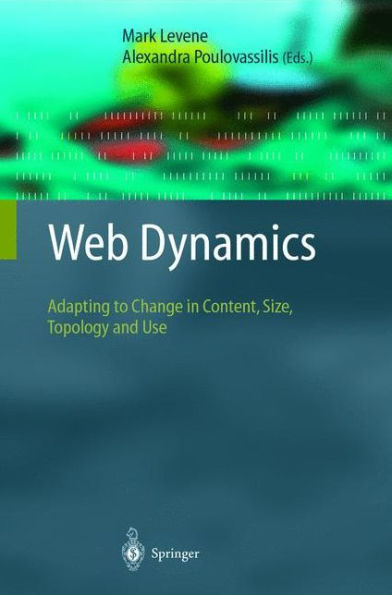5
1
9783540406761



Web Dynamics: Adapting to Change in Content, Size, Topology and Use / Edition 1 available in Hardcover, Paperback

Web Dynamics: Adapting to Change in Content, Size, Topology and Use / Edition 1
- ISBN-10:
- 354040676X
- ISBN-13:
- 9783540406761
- Pub. Date:
- 06/14/2004
- Publisher:
- Springer Berlin Heidelberg
- ISBN-10:
- 354040676X
- ISBN-13:
- 9783540406761
- Pub. Date:
- 06/14/2004
- Publisher:
- Springer Berlin Heidelberg

Web Dynamics: Adapting to Change in Content, Size, Topology and Use / Edition 1
$169.99
Current price is , Original price is $169.99. You
169.99
In Stock

Product Details
| ISBN-13: | 9783540406761 |
|---|---|
| Publisher: | Springer Berlin Heidelberg |
| Publication date: | 06/14/2004 |
| Edition description: | 2004 |
| Pages: | 466 |
| Product dimensions: | 6.10(w) x 9.25(h) x 0.04(d) |
About the Author
From the B&N Reads Blog
